Best Waterproof Camera:
Five top models shoot it out
Sony TX10
The Sony TX10 is the smallest camera up for review by far. Its diminutive form factor makes it the most pocketable of the bunch, but this tiny size comes at the expense of the other cameras' hard-wired controls, replaced by the TX10's expansive touchscreen. Its sleek appearance will attract attention, but there is a usability trade-off. The TX10 currently sells for around $289, placing it squarely between the TS3 and AW100 with regards to price.
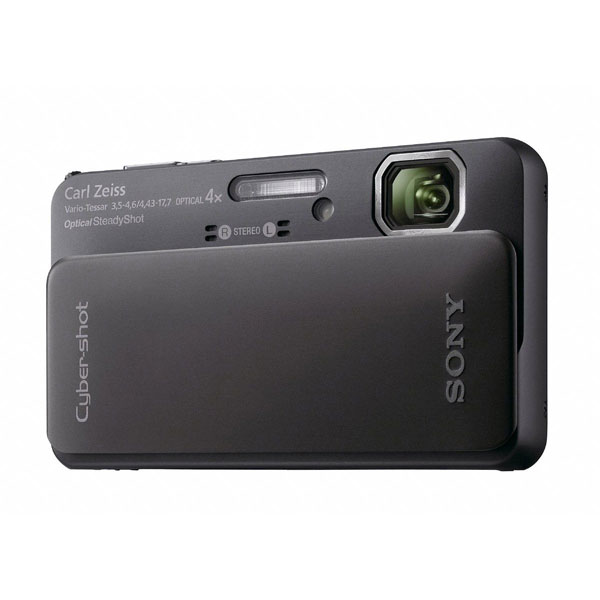
The Good
Compact. The TX10 is smaller than a deck of cards and fits into the front pocket of an average pair of jeans. The TX10 gets away with this because it has an all-metal body instead of its competitors' plastic housings, which keeps it sleek without making it flimsy. The TX10 also has two access doors: one on the side hides HDMI and USB ports, while one on the bottom holds the SD card and battery. By splitting things up, the camera is made thinner than it would otherwise be.
Transcend 16 GB Class 10 SD Card - $11
SanDisk 16 GB Class 10 Memory Card - $14
Lens. The TX10's lens doesn't exhibit any of the distortion or softness problems found on the AW100, but it also has the smallest zoom range. In general, the more zoom range a lens has, the harder it is to make that lens look good all the time. This is evident even in this shootout. The TX10 has the best-looking lens, but the shortest zoom. The AW100 has a longer zoom range, but the lens can look pretty bad. For a demonstration of the TX10's zoom range, we took these two pictures, one at each end of the zoom.
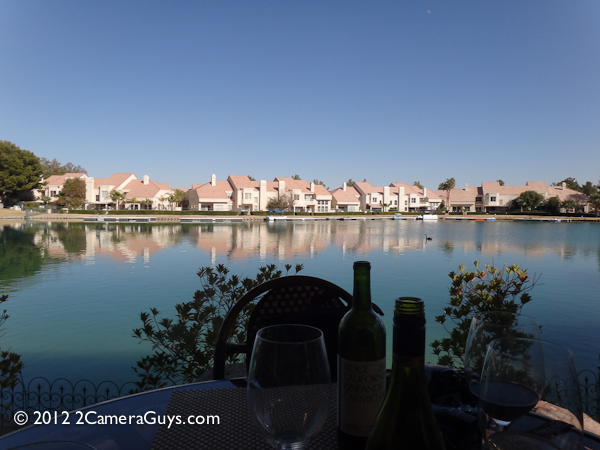 |  |
Image quality. The TX10 takes nice pictures, and we found very little we didn't like about it when it comes to straight image quality. However, the Panasonic TS3 still shows more detail in certain areas. If you don't care about the slight downsides of the TX10 and want a very small camera, it's a good option.
The Bad
Touch screen. There are two kinds of touch screen commonly found in consumer electronics. One kind uses pressure to determine what you're touching, while the other uses electric charge. You can tell which kind is which pretty easily -- if the gadget comes with a stylus, it uses pressure. If you have to use your finger, it uses electricity. The problem with the second type is that they don't work so well when something is messing up the surface electrical charge.
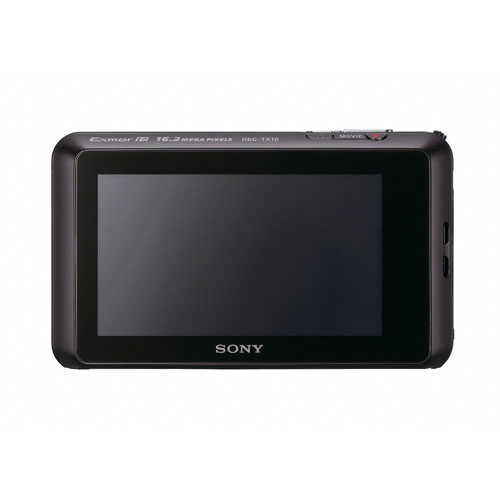
The Sony TX10 uses the second type of screen. The screen is oversensitive at times, and sometimes thinks you pushed a button when you didn't. It also takes up the entire rear panel, which can make it difficult to find a place to put your hands when you're using it. Since the camera relies almost entirely on the touchscreen for user input, you'll have to get used to working with it.
Here's the kicker, though. One of the things that can cause false readings on this type of touchscreen is moisture. Now consider that the TX10 doubles as an underwater camera. When you're underwater, the TX10's touchscreen becomes completely inoperable. The only solution is to make sure all of your settings are correct before you get into the water, which on an underwater camera isn't much of a solution.
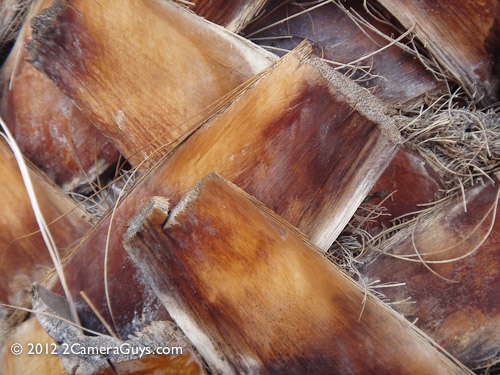 | 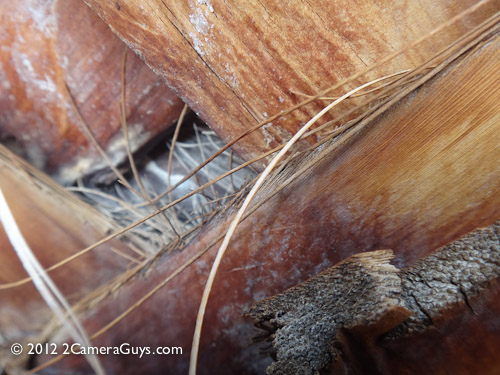 |
The TX10 can focus as close as half an inch for macro shots like the one at right of a palm tree trunk. A wider angle is provided for comparison purposes.
Sliding cover. One of the common places to use a waterproof camera is at the beach. The TX10's sliding cover is not removable, and it is difficult to clean under it, so there is the potential to trap grains of sand or dirt between the camera body and the cover, thereby mucking up the interior or scratching the lens. Make sure you clean out the space between cover and lens as well as you can whenever you get home from somewhere dusty or gritty--compressed air is good for this.
The Verdict
The Sony TX10 is a great point-and-shoot camera for casual use. Its small form factor makes it truly pocketable while its high-quality lens ensures good-looking images, provided you do your part. Its only drawback is that it does not work well as an underwater camera, and the sliding cover, while stylish, can trap dirt or sand.










